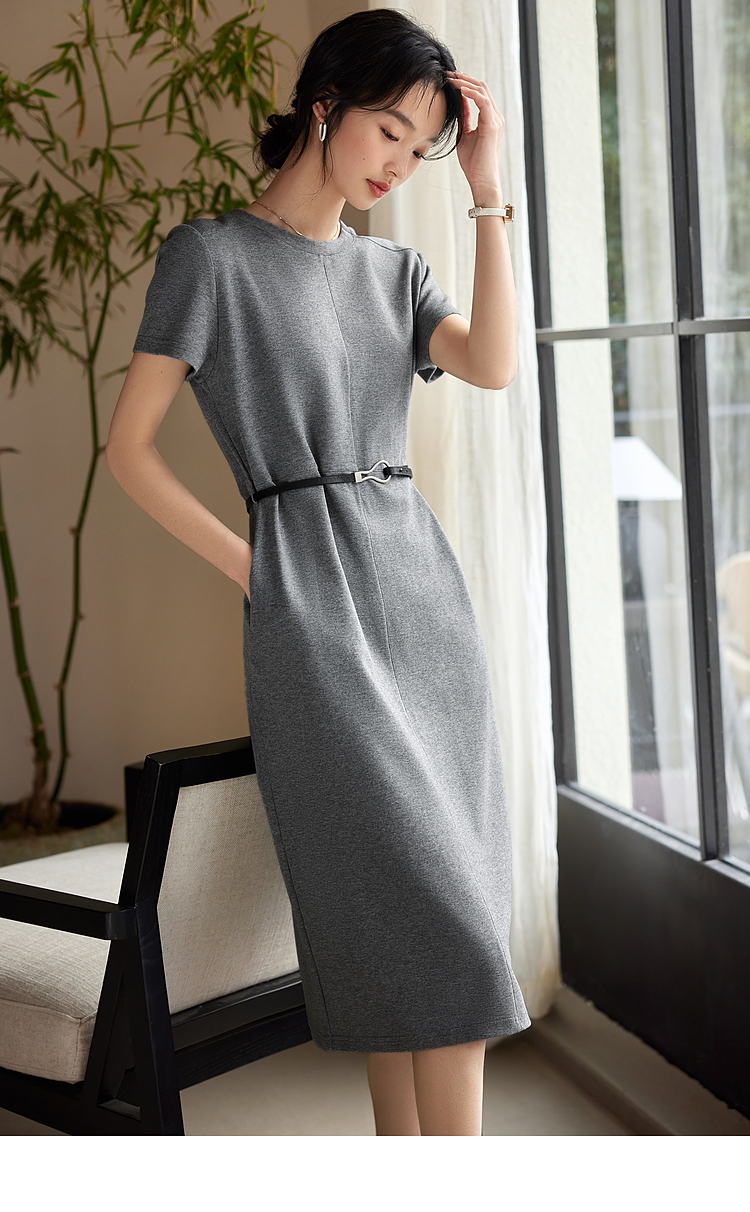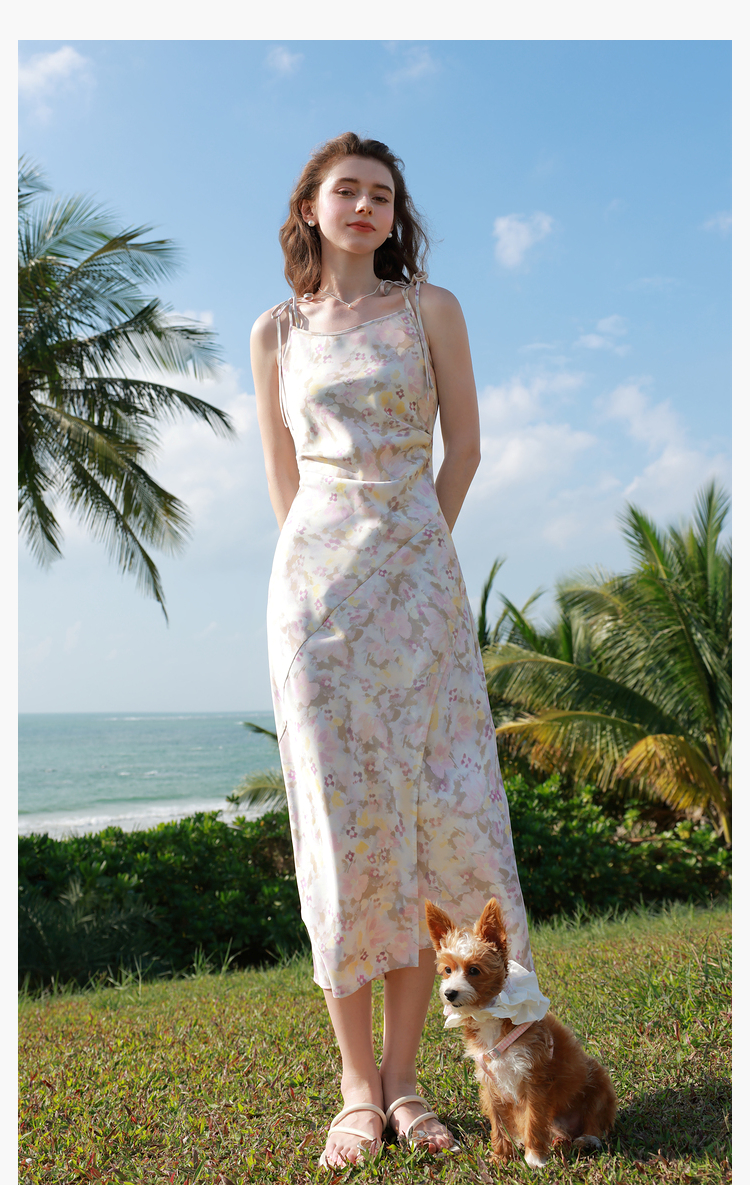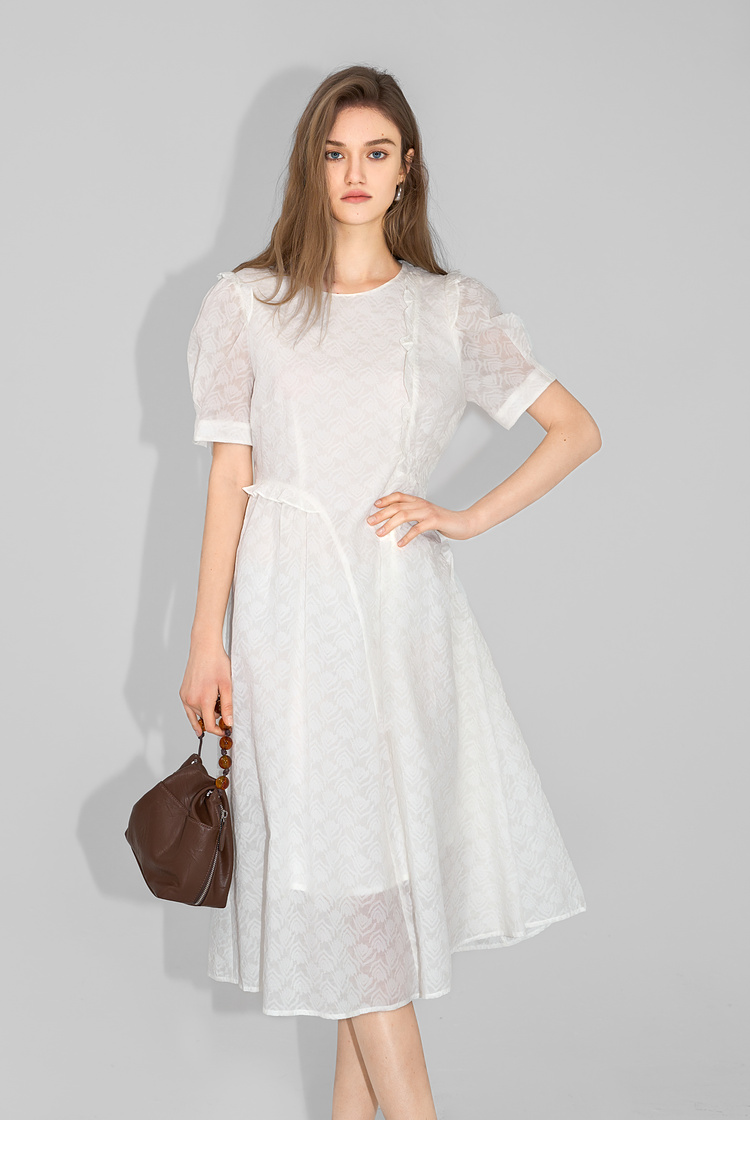Top Trends in Barbie Doll-Inspired Fashion for Women
In the world of fashion, inspiration can come from the most unexpected places. One such source is the iconic Barbie doll, whose wardrobe has been influencing women’s fashion trends for decades. From the runway to the streets, the impact of Barbie doll clothes is undeniable. This article explores the top trends in fashion inspired by the ever-stylish Barbie, offering a fresh perspective on how to incorporate these elements into your wardrobe.
A Brief History of Barbie’s Influence
Since her creation in 1959 by Ruth Handler, Barbie has been a symbol of fashion evolution. Her outfits, designed to reflect contemporary styles, have not only entertained children but also sparked conversations among fashion enthusiasts. As a cultural icon, Barbie has been dressed by renowned designers such as Versace and Dior, further cementing her status in the fashion world.
The Evolution of Barbie’s Style
The evolution of Barbie’s style is a testament to the changing trends in women’s fashion. From the classic ’60s mod looks to the bohemian styles of the ’70s, and the power dressing of the ’80s, Barbie has consistently mirrored the zeitgeist. As we delve into the trends inspired by Barbie doll clothes, it’s essential to recognize the historical context that shapes these styles.
Modern Interpretations of Classic Barbie Looks
Today, fashion designers and enthusiasts alike are reinterpreting classic Barbie looks for a modern audience. The mini skirt and go-go boots, a staple of Barbie’s wardrobe in the ’60s, have been reimagined with contemporary fabrics and silhouettes. Similarly, the glamorous evening gowns that Barbie donned in the ’80s are now seen in more sustainable and body-positive designs.
Sustainability and Barbie-Inspired Fashion
The fashion industry is increasingly focusing on sustainability, and the trend inspired by Barbie doll clothes is no exception. Designers are now creating eco-friendly versions of iconic Barbie outfits, using recycled materials and ethical production methods. This not only pays homage to the original designs but also aligns with the growing consumer demand for sustainable fashion options.
Body Positivity and Inclusivity in Barbie-Inspired Fashion
Barbie has faced criticism over the years for promoting unrealistic body standards. However, recent efforts by Mattel to diversify Barbie’s body types have been met with praise. This shift towards body positivity and inclusivity is reflected in the fashion trends inspired by Barbie doll clothes. Designers are creating outfits that cater to a variety of body shapes and sizes, celebrating diversity in fashion.
Celebrity Endorsements and Social Media Influence
Celebrities have always played a significant role in popularizing fashion trends. The influence of Barbie doll clothes on celebrities like Zendaya and Lily Aldridge is evident in their red carpet appearances and social media posts. These public figures are not only wearing outfits inspired by Barbie but also using their platforms to promote the message of self-expression and confidence that Barbie embodies.
“Barbie has always been a beacon of self-expression and confidence, and that’s something I strive to embody in my own life.” — Zendaya
Conclusion
The influence of Barbie doll clothes on women’s fashion is more than just a passing trend. It represents a cultural dialogue about style, body positivity, and sustainability. As we continue to draw inspiration from Barbie’s ever-evolving wardrobe, we are reminded of the power of fashion to reflect and shape our society’s values.







I appreciate the article’s playful tone. Fashion should be fun, and Barbie-inspired trends capture that spirit perfectly.
I appreciate the article’s focus on sustainability. It’s a reminder that fashion can be both stylish and environmentally conscious.
I’m curious about the maintenance costs of these sustainable outfits. Are they more or less expensive to care for compared to traditional clothing?
I’m a bit concerned about the safety of some of these designs. Are the materials used in sustainable Barbie-inspired outfits safe for all skin types? It would be good to see more information on this.
I appreciate the historical context provided in the article. It’s fascinating to see how Barbie’s style has evolved with the times. This isn’t just about fashion; it’s about cultural history.
The quote from Zendaya is a perfect encapsulation of what Barbie-inspired fashion stands for: self-expression and confidence. It’s more than just clothes; it’s about attitude.
The article’s mention of celebrity endorsements is timely. With the rise of social media, celebrities play a crucial role in shaping fashion trends.
I find it refreshing that Barbie-inspired fashion is now more inclusive and sustainable. It’s a trend that aligns with current social and environmental concerns.
The focus on sustainability in Barbie-inspired fashion is a game-changer. It’s encouraging to see the industry taking steps towards more ethical production methods.
The article could have explored the emotional value of these trends more. For many, Barbie holds nostalgic significance. How do these modern designs tap into that emotional connection?
The historical evolution of Barbie’s style is a fascinating read. It’s amazing how her wardrobe has evolved to reflect the changing times.
The article’s mention of celebrity endorsements is timely. With the rise of social media, celebrities play a crucial role in shaping fashion trends.
The article’s mention of social media influence is spot on. Platforms like Instagram and TikTok are perfect for showcasing these playful, expressive designs.
I appreciate the historical context provided in the article. It’s fascinating to see how Barbie’s style has evolved over the decades, mirroring real-world fashion trends. It makes me want to dig out my old Barbies and see how their clothes compare to today’s designs.
The article’s mention of celebrity endorsements is timely. With the rise of social media, celebrities play a crucial role in shaping fashion trends.
I never thought I’d see the day when Barbie would be a source of fashion inspiration for adults! The article makes a compelling case for why Barbie’s wardrobe is still relevant today. I appreciate the focus on sustainability and inclusivity, which are crucial in the fashion industry. However, I do wish the article had mentioned more about the durability and maintenance costs of these trendy pieces.
I appreciate the article’s focus on sustainability. It’s a reminder that fashion can be both stylish and environmentally conscious.
I love the idea of mixing classic Barbie looks with modern elements. It’s a great way to stay stylish while paying homage to a beloved icon.
I appreciate the historical context provided in the article. It’s fascinating to see how Barbie’s style has evolved alongside real-world fashion trends. It makes me feel connected to a legacy of fashion innovation.
The article’s mention of celebrity endorsements is timely. With the rise of social media, celebrities play a crucial role in shaping fashion trends.
I appreciate the article’s focus on sustainability. It’s a reminder that fashion can be both stylish and environmentally conscious.
The article’s conclusion about the power of fashion to reflect and shape society’s values is thought-provoking. It’s a reminder of the impact fashion can have on our lives.
The article’s mention of social media influence is crucial. Platforms like Instagram and TikTok are where trends like Barbie-inspired fashion gain momentum and reach a broader audience.
I appreciate the historical context provided in the article. It’s fascinating to see how Barbie’s style has evolved alongside real-world fashion trends. It makes me want to dig out my old Barbies and see how their clothes compare to today’s designs.
I find it refreshing that Barbie-inspired fashion is now more inclusive and sustainable. It’s a trend that aligns with current social and environmental concerns.
I appreciate the article’s playful tone. Fashion should be fun, and embracing Barbie-inspired trends is a great way to inject some joy into our wardrobes.
I find it refreshing that Barbie-inspired fashion is now more inclusive and sustainable. It’s a trend that aligns with current social and environmental concerns.
The article’s conclusion about the cultural dialogue around fashion is insightful. It’s a reminder that fashion is more than just clothes—it’s a reflection of our values.
I never thought I’d see the day when Barbie-inspired fashion would be so inclusive. It’s refreshing to see designers creating clothes for all body types, breaking away from the unrealistic standards Barbie once represented.
I never thought I’d see the day when Barbie-inspired fashion would be so inclusive. It’s refreshing to see designers catering to a variety of body types, breaking away from the unrealistic standards that Barbie once represented.
I’m intrigued by the idea of Barbie-inspired fashion for different seasons. How would these trends translate from summer to winter?
The article’s focus on social media influence is timely. With platforms like Instagram, it’s easier than ever for fashion trends to go viral, and Barbie-inspired looks are no exception.
The article does a fantastic job of tracing Barbie’s influence on fashion over the years. I particularly enjoyed the section on modern interpretations of classic Barbie looks. It’s inspiring to see how designers are updating these iconic styles for a contemporary audience. However, I think the article could have delved deeper into the emotional value that Barbie-inspired fashion holds for fans like me.
I’m a fashion student, and this article is a goldmine of inspiration. The historical context provided for each era of Barbie’s style helps me understand the roots of current trends. It’s fascinating to see how fashion evolves and recycles itself.
As someone who grew up playing with Barbies, I find the idea of Barbie-inspired fashion for adults both amusing and intriguing. The article does a great job of explaining why Barbie’s style is still relevant today. I especially appreciate the focus on sustainability and inclusivity. However, I do wish the article had mentioned more about the durability and maintenance costs of these trendy pieces.
The mention of social media influence is crucial. Platforms like Instagram and TikTok are where trends like Barbie-inspired fashion gain momentum and reach a broader audience.
I’m curious about the maintenance costs of sustainable Barbie-inspired fashion. While the eco-friendly aspect is appealing, I hope it doesn’t come with a hefty price tag.
I wish the article had included more examples of designers who are creating Barbie-inspired fashion. It would have been interesting to see specific brands and collections.
I’m excited to see how these trends will evolve. With the growing emphasis on sustainability and inclusivity, the future of Barbie-inspired fashion looks promising.
I wish the article had included more examples of designers who are creating Barbie-inspired fashion. It would have been interesting to see specific brands and collections.
The article’s mention of celebrity endorsements is timely. With the rise of social media, celebrities play a crucial role in shaping fashion trends.
The mention of body positivity and inclusivity in Barbie-inspired fashion is heartening. It’s a step towards a more diverse and accepting fashion industry.
The article does a fantastic job of tracing Barbie’s influence on fashion over the years. I particularly enjoyed the section on modern interpretations of classic Barbie looks. It’s inspiring to see how designers are updating these iconic styles for a contemporary audience. However, I think the article could have delved deeper into the emotional value that Barbie-inspired fashion holds for fans like me.
I wish the article had included more examples of designers who are creating Barbie-inspired fashion. It would have been interesting to see specific brands and collections.
The article’s mention of celebrity endorsements is timely. With the rise of social media, celebrities play a crucial role in shaping fashion trends.
I appreciate the article’s focus on sustainability. It’s a reminder that fashion can be both stylish and environmentally conscious.
The article’s conclusion about the cultural dialogue around fashion is insightful. It’s a reminder that fashion is more than just clothes—it’s a reflection of our values.
The article’s conclusion about the cultural dialogue around fashion is insightful. It’s a reminder that fashion is more than just clothes—it’s a reflection of our values.
I wish the article had included more examples of designers who are creating Barbie-inspired fashion. It would have been interesting to see specific brands and collections.
I’m a bit concerned about the safety of some of these designs. Will the use of recycled materials compromise the quality and safety of the garments?
I wish the article had included more practical tips on how to incorporate these trends into everyday wear. That would have made it more actionable for readers.
As someone who grew up in the ’80s, I love seeing modern interpretations of Barbie’s power dressing. It’s a nostalgic nod to the past while keeping it relevant for today.
The focus on sustainability in Barbie-inspired fashion is a game-changer. It’s encouraging to see the industry taking steps towards ethical production methods. I hope this trend continues to grow.
As a lifelong Barbie fan, I’m thrilled to see her influence extend beyond childhood play into adult fashion. The sustainability aspect is particularly appealing—it’s great to see iconic designs being recreated with eco-friendly materials.
I’m glad the article addressed the criticism of Barbie’s unrealistic body standards. The shift towards inclusivity is a positive step forward.
The article’s conclusion about the cultural dialogue around fashion is insightful. It’s a reminder that fashion is more than just clothes—it’s a reflection of our values.
The focus on body positivity is commendable, but I hope this isn’t just a trend. Fashion needs to continue pushing for inclusivity beyond just a few seasons.
As a stylist, I’m always on the lookout for unique pieces that make a statement. Barbie-inspired fashion offers just that. The article’s suggestions for incorporating these elements into everyday wardrobes are practical and exciting.
I wish the article had included more examples of designers who are creating Barbie-inspired fashion. It would have been interesting to see specific brands and collections.
As someone who grew up in the ’80s, I love seeing modern interpretations of classic Barbie looks. The power dressing trend from that era is making a comeback in a fresh, contemporary way.
The article’s conclusion about the power of fashion to reflect society’s values is profound. It’s a reminder that what we wear isn’t just about aesthetics; it’s about identity.
I wish the article had included more examples of designers who are creating Barbie-inspired fashion. It would have been interesting to see specific brands and collections.
The emotional value of these trends is undeniable. Wearing something inspired by Barbie brings back so many happy childhood memories.
I’m all for cost-effectiveness, but I hope these trends don’t become too expensive. Fashion should be accessible to everyone, regardless of income level.
I’m glad the article addressed the criticism of Barbie’s unrealistic body standards. It’s important to recognize the progress Mattel has made in diversifying Barbie’s body types and how that’s influencing fashion trends.
The article’s focus on body positivity in Barbie-inspired fashion is a breath of fresh air. It’s important for all body types to feel represented and celebrated in the fashion industry.
I’ve always seen Barbie as a symbol of confidence and self-expression. The quote from Zendaya in the article resonates with me. Fashion should be about feeling good in your own skin, and Barbie’s influence in that regard is undeniable.
As a lifelong Barbie fan, I’ve always admired her iconic style. The article perfectly captures how Barbie’s fashion has evolved, reflecting real-world trends. It’s inspiring to see how designers are now incorporating sustainability and inclusivity into Barbie-inspired fashion.
I’m a bit skeptical about the durability of eco-friendly Barbie-inspired fashion. While the sustainability aspect is important, I hope designers are also considering the longevity of these pieces.
I’m a fashion historian, and the article’s historical context is accurate and insightful. It’s a great resource for understanding the evolution of fashion through the lens of Barbie’s wardrobe.
The article’s focus on body positivity and inclusivity in Barbie-inspired fashion is a welcome change. It’s important for all consumers to see themselves represented in the fashion they love.
As a mother of two girls, I’m thrilled to see the shift towards body positivity and inclusivity in Barbie-inspired fashion. It’s crucial for my daughters to see diverse body types represented in their toys and the clothes they wear.